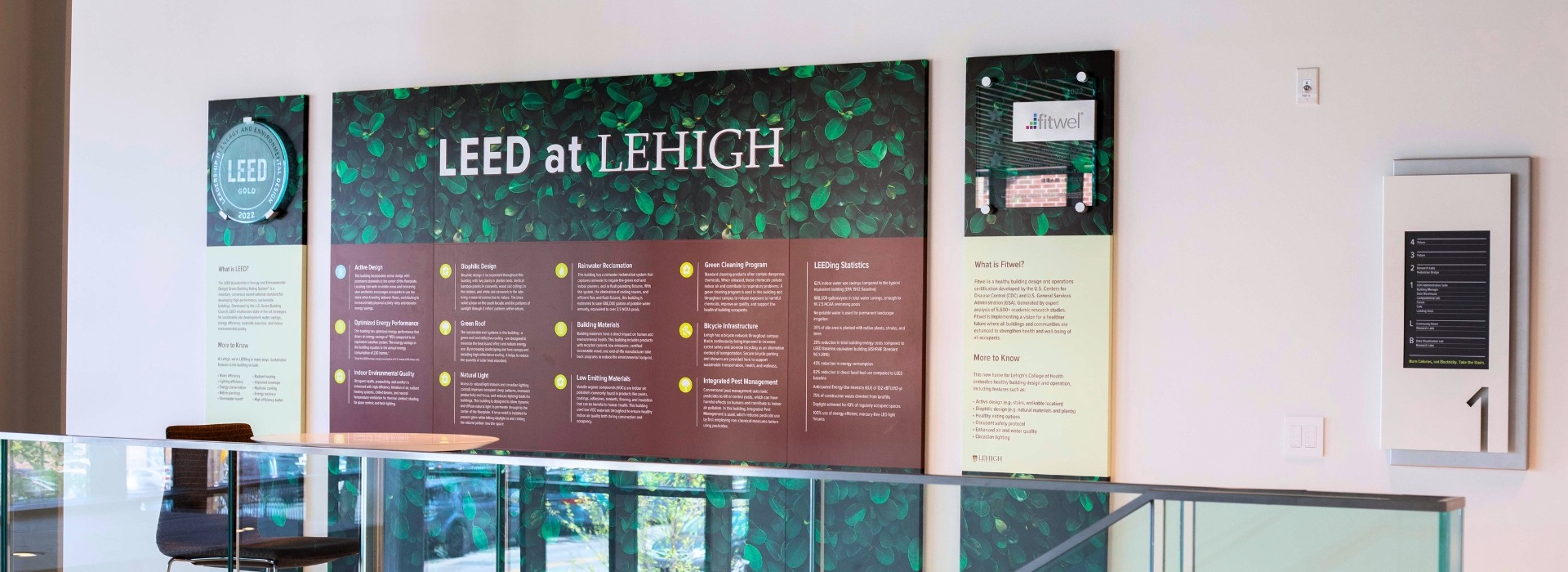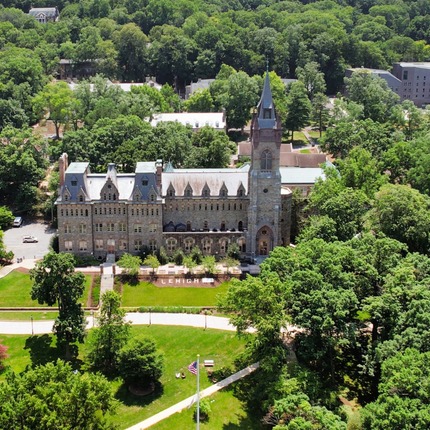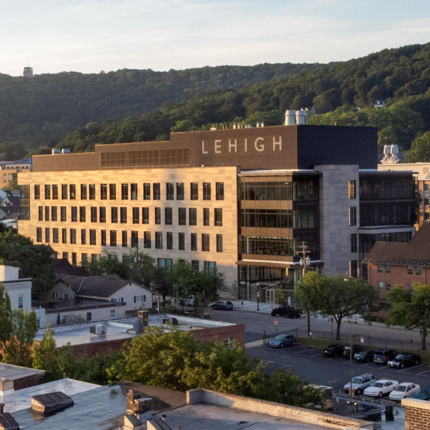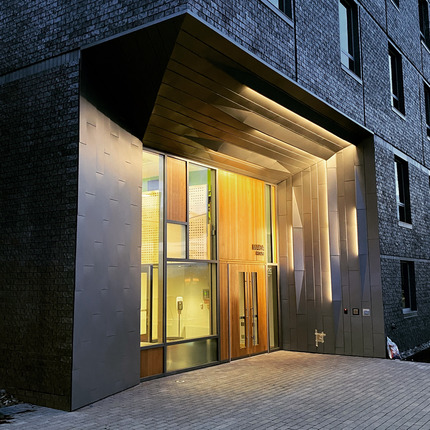
As part of Lehigh's Sustainability Strategic Plan, all major construction projects ($5M+) must comply with the waste diversion goals of LEED Silver or equivalent, or higher.
The U.S. Green Building Council (USGBC) developed the Leadership in Energy and Environmental Design (LEED) Green Building Rating System, which is a system that sets criteria to rate a building's environmental efficacy. The USGBC awards points for green measures such as sustainable site development, water savings, energy efficiency, materials selection, and indoor environmental quality. A certified project may fall into one of the four LEED classifications: Certified (40-49 points earned), Silver (50-59 points earned), Gold (60-79 points earned), and Platinum (80+ points earned).
Lehigh’s building and land use philosophy is a nod to our legacy and our historical character, while also considering connectivity and environmental stewardship. Lehigh has established standards that require all new and existing campus construction to be built to USGBC LEED Silver (or equivalent) standards or higher.
Clayton University Center Renovation

LEED Silver, 2025
The Clayton University Center (CUC) is located off of Trembley Drive, in the heart of the Asa Packer campus. Renovated in 2024-2025, the CUC was reimagined to preserve the historical integrity and transform it into a true center for student and campus life. The CUC was awarded LEED Silver in 2025.
Green features include diverse space uses, site rainwater management, indoor water use reduction via low-flow fixtures, low-VOC interior finishes, and enhanced indoor air quality strategies.
Business Innovation Building

LEED GOLD, 2023
The Business Innovative Building (BIB) is an expanded home for the College of Business. The 74,000 sq ft building, located on the corner of E Packer Avenue and Taylor Street, allows for innovative ways of teaching and expansion of programs. BIB was awarded LEED Gold in 2023.
Green features include diverse space uses, indoor water use reduction via low-flow fixtures, daylight maximization and smart indoor lighting, low-VOC interior finishes, and enhanced indoor air quality strategies.
Health, Science, and Technology

LEED Gold, 2022
The Health, Science, Technology building is home to the College of Health. Located on the corner of Morton Street and Webster Street, it’s a 190,000 square foot building that provides modern research and teaching space. It was awarded LEED Gold certification and Fitwel Three Star certification in 2022.
Green features include a rainwater reclamation system for non-potable water usage (flushing toilets, irrigation), innovative chilled beams to conserve energy, use of low VOC materials to ensure healthy air quality, a green roof, reflective roofing, and more.
Singleton, Hitch, and Maida

LEED Silver, 2022
Singleton, Hitch, & Maida is a new residential building completed in 2020 that consists of three connected wings. It is a 147,000 square foot building located on West 8th Street and is LEED Silver certified.
Green features include low-flow fixtures, room occupancy sensors, low VOC building and finish materials, daylighting strategies to harness natural light, a green roof, native plantings, pervious pavement, and more.
Chandler-Ullmann Hall

LEED Certified, 2020
Chandler-Ullmann Hall, which was renovated in 2019, is a LEED Certified building that was completely renovated to preserve the historical integrity and envelope of the building, while upgrading the interior. It is a 95,000 square foot building located on Memorial Drive East.
Green features include low VOC-emitting materials, indoor chemical and pollutant source control, reused building materials, lighting and thermal controls, and more.
Willams Hall

LEED Gold, 2016
Williams, which was renovated in 2015, is a LEED Gold-certified building that was completely renovated to become a lively interdisciplinary academic building and global hub for students. It is a 63,000 square-foot building located on Williams Drive. It is the first building on the Lehigh campus to earn a LEED certification for a renovation.
Green features include optimized energy performance, water-efficient landscaping, low VOC-emitting materials, a heat island-minimizing roof, and more.
STEPS Building

LEED Gold, 2011
STEPS, which opened in 2010, is a LEED Gold-certified building that houses cutting-edge classrooms and labs that facilitate interdisciplinary work in science, technology, environment, policy, and society. It is a 135,000 square foot building at the corner of West Packer and Vine Street. It is the first building on the Lehigh campus to earn a LEED certification for new construction.
Green features incorporated into the building design began with the site selection—which preserved a large portion of the original green lawn space—and also included lighting considerations that maximized natural daylight potential, an energy recovery system, water conservation features, a vegetated roof, low volatile organic compound (VOC) materials in paints and carpet, the use of sustainable materials in construction and design, waste reduction features, and sustainable building systems.
